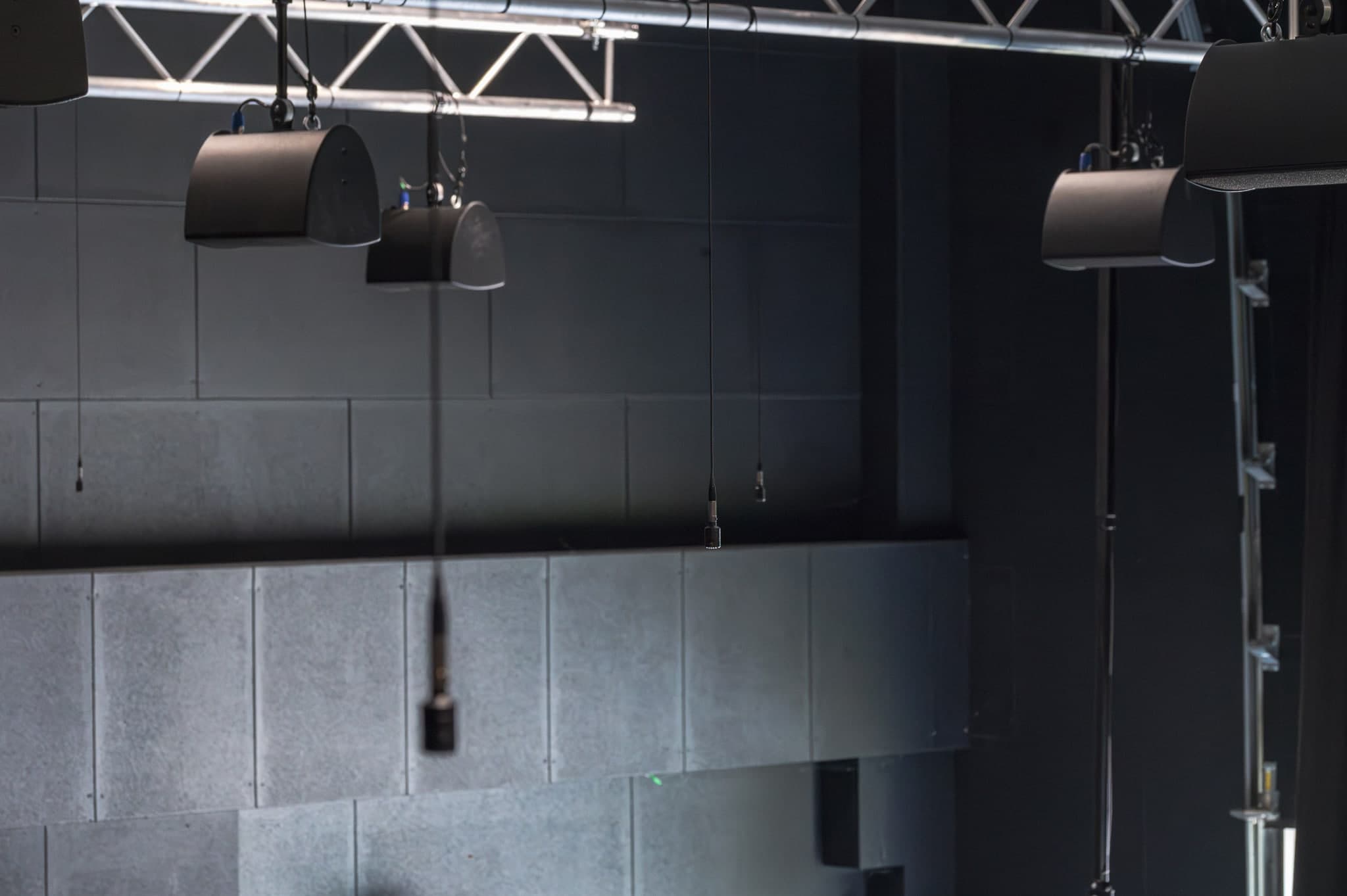
Variable acoustics
The coupling of a multi-channel sound system, specialised loudspeakers and microphones and a closed management system which, after programming and surveying, allows a dynamically variable correction or increase in reverberation. Particularly in neutral (i.e. studio) or acoustically poor halls in order to adapt them to concert conditions.
The system is used to change the room acoustics (increase reverberation time) and bandwidth corrections of the sound material. The theoretical basis for the system was developed at Delft University of Technology using the Carrouso programme. The programme was concerned with the analysis of wavefield synthesis and the concept of 3D wavefield reproduction. The heart of the ACS system, the main AE-x processors, was developed in cooperation with Delft University of Technology. The basis of the system’s operation is to work on untouched direct sound. This principle makes it possible to simplify the system architecture and ensure a natural sound experience. The system’s operation is based, among other things, on the adjustment of reverberation values in separate octave bands, which can also influence a number of acoustic parameters, such as bass ratio, treble ratio, sound strength, reverberation field level and sound clarity. This makes it possible to select very precise settings, ensuring an acoustic wave field that is optimal for the ideal room. In addition to system operation that ensures ideal reception conditions, i.e. the listener has no impression that any electro-acoustic system is operating in the room apart from the musicians. The system can also be programmed for effect settings, i.e. with artificial acoustic parameters. Their adjustment can take into account, for example: the sound material. The system includes processors, matrixes with 96 inputs and 96 outputs with individual signal processing, microphones, microphone preamplifiers and power amplifiers. The system provides sound reception without colouration, without unnatural augmentation of the sound image. In operation, the system provides correct spatial characteristics while maintaining accurate perception of sound source locations.